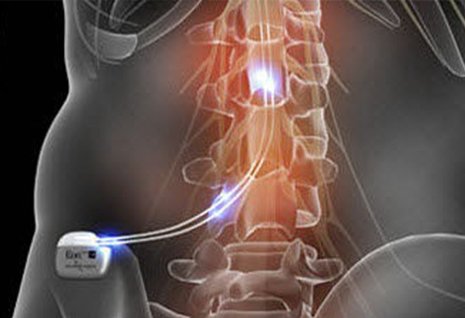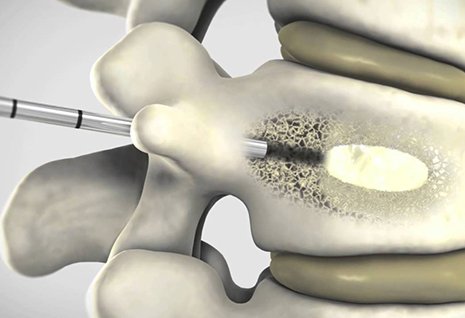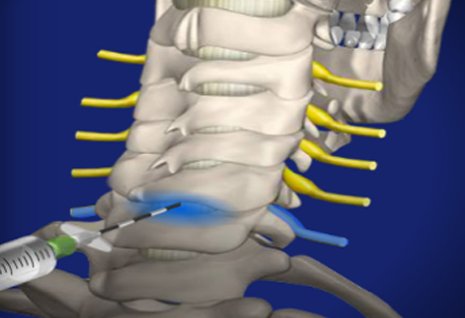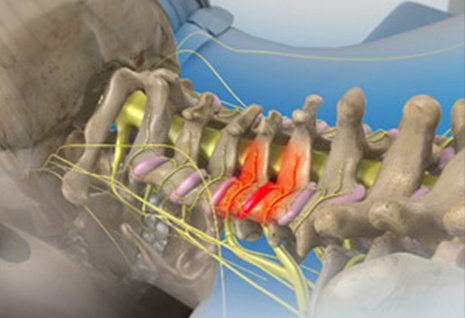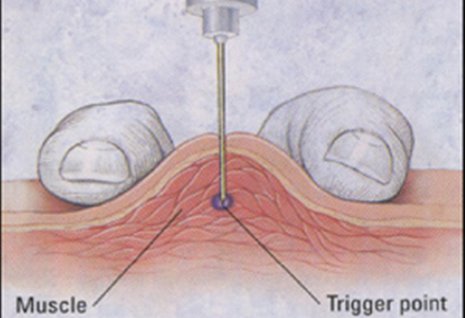Radiofrequency ablation is a minimally invasive procedure that is performed with local anesthesia and mild sedation. As with many spinal injections, radiofrequency neurotomy is best performed under fluoroscopy (live x-ray) for the best guidance in properly targeting and placing the needle. In this procedure, a heat lesion is created on certain nerves with the goal of interrupting the pain signals to the brain, thus eliminating pain.
A radiofrequency neurotomy is an injection procedure used to treat facet joint pain or sacroiliac joint pain caused by arthritis, other degenerative changes, or from an injury.
Radiofrequency Ablation Steps
The neurotomy or ablation procedure includes the following steps:
- An IV line is started so that sedation medicine can be given
- You lie down on a procedure table and the skin over the neck, mid-back, or low back is cleaned well
- A small area of skin is then numbed with a local anesthetic
- The x-ray guidance (fluoroscopy) is then used to direct a special (radiofrequency) needle alongside the medial or lateral branch nerves
- A small amount of electrical current is carefully passed through the needle to assure it is next to the target nerve and in a safe distance from touching other nerves. This current should briefly recreate the usual pain and cause a muscle twitch in the neck or back.
-
The targeted nerves will then be numbed to minimize pain while the lesion is being created
-
The radiofrequency waves are brought to heat at the tip of the needle and a heat lesion is created on the nerve to disrupt the nerve's ability to send pain signals
-
This process will be repeated for additional nerves to help alleviate your pain
Radiofrequency Ablation Types
There are two primary types of radiofrequency ablation:
1. Medial branch neurotomy (ablation) which affects the nerves carrying pain from the facet joints.
2. Lateral branch neurotomy (ablation) which affects nerves that carry pain from the sacroiliac joints.
These medial branch nerves do not control any muscles or sensations in the arms or legs. Thus the importance of a heat lesion, which poses little danger of negatively affecting those areas. The medial branch nerves do control small muscles in the neck and mid or low back, but the loss of these nerves has not proved harmful.
Medial Branch/Nerve Blocks & The Facet Radiofrequency Ablation Procedure
Before the radiofrequency ablation procedure, or medial branch nerve block will have already been performed to prove that the patient's pain is being transmitted by those nerves. The medial branch or lateral branch block acts as a test run before the neurotomy procedure. Additionally, a sacroiliac joint injection, facet joint injection, or other treatment methods will usually already have been attempted before this procedure is performed.
Success rates vary, but typically about 30% to 50% of patients undergoing this procedure for low back pain will experience significant pain relief for as much as one year. Of the remaining low back pain patients, about 50% will get some pain relief for a shorter period. Some patients do not experience any relief from pain as a result of this procedure.
As a general rule, if effective, the ablation will often provide pain relief lasting at least 9 to 14 months and sometimes for longer. After this period of time, however, the nerve will regenerate and the pain may return.
In some low back pain programs, if three facet block injections provide good but temporary relief of the patient's pain, a facet rhizotomy injection may be recommended. The purpose of a facet rhizotomy injection is to provide a lasting low back pain relief by disabling the sensory nerve that goes to the facet joint.
In this injection procedure a needle with a probe is inserted just outside the joint. This probe is then heated with radio waves and applied to the sensory nerve to the joint in order to disable the nerve. Theoretically, by deadening the sensory nerve to the facet joint, a facet rhizotomy effectively prevents the pain signals from getting to the brain.
Discover today’s most effective pain solutions at Texas Interventional Pain Care. Call us at 972-952-0290 or use our convenient Request an Appointment form.






